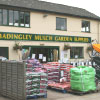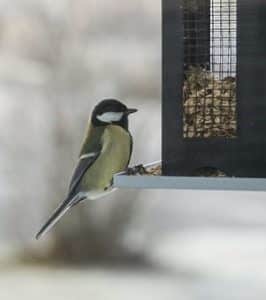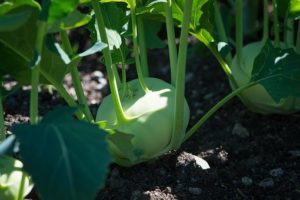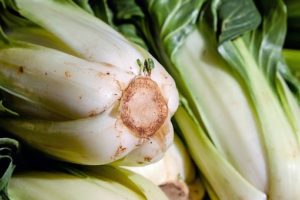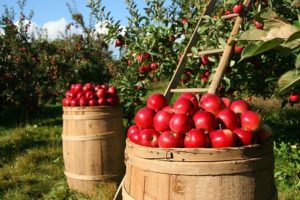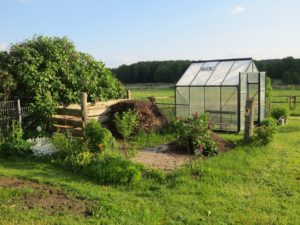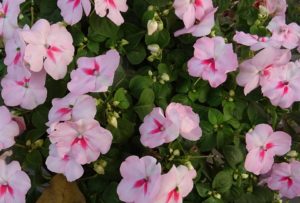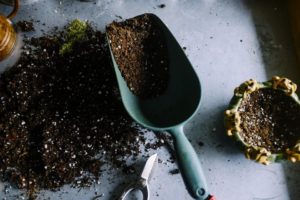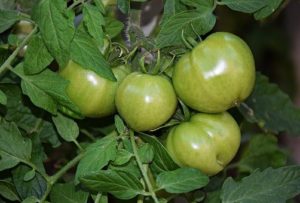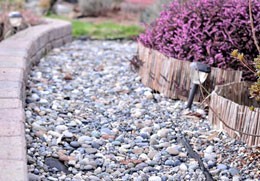How to Encourage Youngsters to Enjoy Gardening
Your garden and your children can often compete for demands on your time, so why not get them interested in the world of plants and flowers?
Not only will it give them an exciting new hobby, but the shared interest will also allow you to spend some quality time with them, and they could even help you out with some chores.
Madingley Mulch, who are based near Cambridge, can deliver soil conditioners and compost in Bedfordshire, Hertfordshire, Essex and Suffolk as well as Cambridgeshire. Here are our top tips for making sure that green fingers need not be confined to the older generation.
Let Them Have Their Own Space
Children usually enjoy something they can call their own. So think about letting them have a small area within your garden where they can grow what they like. This need not be too big an area; it could just be a few pots rather than a whole bed. It could also be a space within your own allotment.
You can usually buy a range of smaller garden tools which are suitable for children. The important thing is to encourage them to do as much as possible; so try not to interfere more than you need to, although if something dies you might need to explain why.
One way of avoiding this is to help prepare the ground for them. Children will have a much greater chance of success if their patch of garden has been well prepared. We are suppliers of a wide range of soil conditioners and bags of compost in Bedfordshire, Hertfordshire, Essex and the surrounding counties, including Denise’s Delight. This blend of well-rotted horse manure, Black Fen soil, wood shavings and plant nutrients is exclusive to Madingley Mulch and is ideal if your child wants to grow something in a raised bed.
Grow Something Quickly
Children also enjoy seeing the results of their work, and preferably the quicker the better. There are a number of plants which are easy to grow, such as primroses, pansies or lavender. If they want something to eat after all their work, and particularly if you have your own allotment, vegetables such as lettuces, radishes and carrots should be ready in a few weeks. Eating something they have grown themselves will give them a great sense of achievement.
Let Their Interest Grow Naturally
The first seeds of interest need not be sown at home. Children could enjoy visits to large public gardens too. Many organisations, such as the Royal Horticultural Society or the National Trust, offer family memberships or reduced admission prices for children, as well as special activities to keep the younger generation interested. You could use these trips to point out to them all the different plants they have which you don’t have in your own garden.
Sow the Seeds at School
Teachers can also help foster a love for gardening, and not just through lessons. Many schools have their own gardens which can give children a chance to put into practice what they are learning in the classroom. If the school doesn’t have a garden, the RHS can help teachers to set one up via its Campaign for School Gardening. The society also runs range of competitions and activities which ensures that pupils’ interest continues through the school year.
Madingley Mulch sell a range of products which will help improve your garden for both you and your children, including tools and bulk deliveries of composts and conditioners. We also provide school garden and allotment supplies. We deliver to towns and villages across the Cambridge area, including Saffron Walden, Royston and Cambourne. Follow the link to check out our range of products and prices.
Top Tips to Get Your Lawn in Trim for Summer
One of the most satisfying sights for the gardening enthusiast is being able to look out on a lush green lawn.
Madingley Mulch, based near Cambridge, is a leading lawn top dressing supplier to customers in Bedfordshire, Hertfordshire, Essex and Suffolk, as well as our home county. Here is our guide to what you can do now to make sure you can enjoy some green grass at home over the summer months.
Weed It and Feed It
Now is the ideal time of year to give your grass the best chance of flourishing by removing the weeds. Dandelions and daisies can be removed by hand, while raking your grass over and then mowing it will discourage other types of unwanted, creeping plants such as speedwell and white clover.
If your lawn’s weeds are well established or growing, you can also apply weedkiller at this time of year, but check it will be effective against the type of plants you want to get rid of. Depending on the manufacturers’ instructions, you may need more than one application of it.
Maintain it Regularly
You can use fertiliser if your grass has lost its freshness, but generally not after August as that is too late. It can encourage growth in your weeds as well as grass at the wrong time of year.
As far as watering goes, don’t panic too much if there is a long dry spell. It will take a severe drought to do long-term damage to your grass, which can be remarkably resilient. Remember that one substantial watering, which gets right down to the roots, will do a lot more for the quality of your lawn than an occasional sprinkling from a can.
All lawns benefit from regular mowing. The Royal Horticultural Society recommends doing this once a week in spring, and twice a week during the summer months, although the exact frequency will depend on the weather. For instance, if there is a prolonged dry spell, you may be able to reduce the amount of cutting.
Create Your Own Lawn
If you think your lawn would benefit from a complete makeover, then you can create a new lawn by digging out a patch of garden soil to a depth of 20-25cm (8 to 10in). Dig in some well-rotted manure or organic matter like Denise’s Delight, our exclusive product which will help your new lawn retain moisture. We also sell lawn dressing, which improves the soil quality and will improve the quality of your grass roots.
You should then let the soil settle for around six weeks, removing any weeds which grow up in the meantime. Level it by treading it down, then rake it and put a general-purpose fertiliser on it. Then you can start seeding the site, although you might need to put up some form of fencing or netting to deter hungry birds, but remember you will still need to water it.
If you already have a lawn, but one which needs some tender loving care, you can just reseed bare patches, particularly after you have weeded it.
Madingley Mulch sell a range of grass seeds suitable for different types of lawn; for example, where the grass is well shaded, or in a particularly sunny spot. Our tough lawn mixture is suitable for areas that get a lot of use, such as children’s play areas. We sell large economy bags as well as smaller ones. If you are not sure which type to buy, our staff will be happy to advise you.
Replace it With New Turf
If your lawn is in a really poor condition, you may prefer to replace it completely. This can be done in late spring or early summer but you might prefer to wait until autumn. Although turf comes pre-prepared, you still need to take care, particularly in the early stages. It is vital you do not let it dry out before you lay it, and you will need to water it well to help the roots get established. Generally, you should let nature take its course, so you should avoid treading on your new turf for the first couple of weeks. As with seeding, try not to use any treatments until the grass has become well established.
We can supply top-quality turf in rolls of 1 sq m which has been grown locally. We offer free delivery of your turf supplies within a 15-mile radius of our base just outside Cambridge. As with other products, including bulk topsoil and compost orders, a standard £20 delivery charge applies within a radius of 24.5 miles and if it is further than that then contact us on 01954 212144 for a quote.
Madingley Mulch is a lawn top dressing supplier with customers in Bedfordshire, Hertfordshire, Essex and Suffolk as well as Cambridgeshire. We sell a whole range of products, including tools and fertilisers, to help you create a lovely lawn. We run a regular delivery service to towns and villages in the Cambridge area, including Comberton, Coton and Hardwick. Click on the link to visit our online shop.
How to Make Your Garden Wildlife Friendly
Spring and summer are usually the time of year when we really turn our attention to our gardens. The better weather offers the chance of a fresh start, and this can mean encouraging other forms of nature other than just the new bulbs and flowers you might want to plant.
As garden mulch suppliers with many customers in Suffolk, Essex, Hertfordshire and Bedfordshire as well as Cambridgeshire, at Madingley Mulch we are interested in encouraging wildlife into your garden. Here we look at some of the best ways to make your garden attractive to everything from butterflies and bees to hedgehogs.
Plant Pollen-Rich Flowers
If you want to see plenty of bees and butterflies flying around, then choose the right sort of plants which will provide plenty of pollen for as long as possible. These include crocus and mahonia in spring and later-flowering ivy in the autumn. This has another beneficial effect, as pollinators such as bees and butterflies play a vital role in the eco-system and are essential to seed and fruit production.
Keep Part of Your Garden Wild
A wild area of the garden could be of great benefit to all sorts of wildlife. Hedgehogs like to build their nests from old wood, fallen leaves and other dead vegetation. Stag and bark beetles and their grubs, and many species of fungi, also thrive in such areas.
Letting your lawn grow longer has its advantages too, as taller grass can help the eco-system thrive. A patch of longer grass can provide shelter for small mammals such as wood mice, voles and shrews, and food for some butterfly caterpillars, while some creatures lay their eggs in it.
Enrich Soil Naturally
Enriching soil with natural soil conditioners and compost, can help to make your garden wildlife friendly and encourage beneficial insects. Compost is valuable for keeping your soil healthy, and benefits everything living in it and growing on it. If you have space, a compost heap in your garden is also a good idea, and not just because it can shelter many small creatures and some larger ones like slowworms and grass snakes.
Garden mulch suppliers Madingley Mulch stock soil conditioners including our own products Denise’s Delight, a blend including Black Fen soil and well-rotted horse manure, and Tony’s Tonic, a compost made from wood shavings, again with well-rotted manure. We also supply spent mushroom compost and other quality composts and mulches, offering delivery of bulk bags in Cambridgeshire, Essex and across East Anglia.
Provide Lots of Water…
If you want more wildlife in your garden, then leaving out some water is a good way to encourage birds. Water is important in summer as well as during the colder months. Hedgehogs, too, benefit from a bowl of water – they are lactose intolerant so milk is not a good idea. They also drink a lot overnight so, if you have a friendly hedgehog in the neighbourhood, don’t forget to top the water bowl up before you go to bed.
As well as drinking water, you could also build a pond to encourage creatures such as newts or frogs. It need not be that deep or big and for a wildlife garden it is best to resist putting in fish, as they could get eaten by other predators. It’s advisable to make sure it has one sloping edge, so the creatures can get in and out without too much trouble.
…and Plenty of Food
In the case of hedgehogs, boiled eggs, chopped nuts and cooked potatoes can supplement their usual diet. Bread, like milk, is not suitable for their metabolisms.
The best foods for birds can range from kitchen scraps and fat balls to peanuts and sunflower hearts to bespoke seed mixtures.
If you want to go a stage further and put up a nesting box, then they should be two to four metres high for tits, sparrows or starlings and ideally fixed to a tree or wall. For smaller birds like robins and wrens, the boxes should be lower down and preferably hidden in vegetation. A box will need cleaning out once a year, usually in autumn, once any birds have stopped using it, as can harbour parasites which will reduce any new chicks’ chances of survival the following year.
Madingley Mulch sells a wide range of gardening supplies, including mulches, soil conditioners and topsoil, which can help you create a wildlife-friendly garden. All our orders can be delivered free to destinations within 15 miles of our base on the edge of Cambridge, and there is a standard £20 charge for all destinations within 24.5 miles. We run regular deliveries to Newmarket, Ely and many other local towns and villages. Follow the link above to contact our friendly, knowledgeable staff, who will be happy to offer advice.
Ways to Tackle Weeds in Your Garden
Now is the time of year that many people are looking to revitalise their garden with beautiful plants. But you will have to guard against weeds, which can be every gardener’s enemy.
Cambridge-based Madingley Mulch are leading bark mulch suppliers for customers in Essex, Hertfordshire, Bedfordshire and Suffolk, as well as Cambridgeshire. We stock a range of products to make sure your plants flourish and help you fight these unwanted visitors.
Use a Mulch
A weed is often described as ‘a plant growing in the wrong place’ such as a cultivated space like a garden, park or farm field. If you are dealing with a patch of bare soil, then the best plan is to prevent weeds from growing in the first place by effectively suffocating them at source. You can cover the soil with a mulch containing bark or wood chippings in the spring. This will help to retain moisture in the soil as well as stop weeds from growing.
Enrich the Soil
Enriching the soil can help to prevent weeds growing, with evidence showing that fewer weed seeds germinate in well-nourished soil which contains a good level of organic material. Our own exclusive blend of soil conditioners, Denise’s Delight, contains Black Fen soil and well-rotted horse manure, plus wood shavings, humus and plant nutrients. This means it has the advantages of both soil and compost and makes it ideal for use in raised beds.
Annual or Perennial?
If weeds do break through, then how you tackle them may depend on the type of weed and the time of year. Weeds which grow annually, such as chickweed, hairy bittercress and groundsel, are best combated by hoeing. This should not be done too deeply, as it can bring ungerminated seeds to the surface.
Perennial weeds, such as Japanese knotweed, field horsetail and the common or garden dandelion, can be removed with a fork. As these types of plants can go deep into the soil, you will need to get all of the root out, so sometimes it will help if they are treated with a weedkiller such as glyphosate. Weed-suppressing mulches can also be effective in attacking these types of plant.
Other Environmentally Friendly Methods
If you would prefer not to use a weedkiller, then there are a range of organic methods, in addition to mulches, hoeing and forking out, you can use which will not affect the quality of the soil.
You could burn them out with a weed wand. This is particularly suitable for weeds growing in narrow spaces such as between patio paving slabs. Another source of heat, namely boiling water, can be effective in similar cases although some weeds with longer roots, such as dandelions, may resprout so you might need to dig out the base of the root; and in patios you might need to repeat the treatment two or three times to get rid of the offending weed completely.
Another option is to give nature a helping hand. Edging boards will stop your lawn growing where you don’t want it to. You can also use a range of fabrics to suppress weeds at source, from plastic sheeting to woven or spun materials. The latter two options will have the added benefit of allowing moisture through, allowing your plants to flourish. Many of these solutions work better if they are covered with a layer of mulch.
Whatever method you choose, Madingley Mulch can help, as suppliers of bark mulch, garden compost and a wide range of gardening products. We deliver bulk loads across the Anglia region, including Essex, Suffolk and Bedfordshire, and we have a gardening, DIY and building materials shop on site. We run a regular delivery service to Huntingdon, St Ives, St Neots and many other towns and villages in the area. You can talk to our friendly store staff about your best strategy for beating the weeds in your garden. Click on the link to see our shop’s range of products.
Unusual Vegetables You Can Grow in Your Garden
A recent shortage of vegetables on our supermarket shelves, caused by extreme weather in the Mediterranean, highlighted why there has never been a better time to think about growing your own. This does not necessarily mean just having your cabbage patch or planting potatoes, because our climate can accommodate a range of weird and wonderful veg.
Cambridge-based Madingley Mulch, one of the leading suppliers of soil conditioners in Essex, Suffolk and Hertfordshire as well as Cambridgeshire, can provide you with a whole range of gardening products and helpful advice if you want to go green – but in a slightly different way. Here are half a dozen of the more unusual veg you probably never even thought you could grow.
New Zealand Yam
These were once thought of as the successor to the potato. They should be planted in April and harvested from October to December. You should plant them in pots of compost on a windowsill and move them to a sunny site in your garden after the frosts have passed. The white to lemon-yellow flesh has a smooth, silky texture with a nutty taste.
Kohlrabi
This is sometimes referred to as ‘kohl rabi’. It is an oddly-shaped plant which has a delicious smell and nutty flavour, and can be eaten raw as well as cooked. A member of the brassica family of plants, which also includes the cabbage and mustard plants, the kohlrabi copes better with a drought than most of them. Green varieties are sown from mid spring to mid-summer for summer crops; hardier, purple varieties are sown from mid-summer for autumn and winter crops.
Purple Sprouting Broccoli
Once cooked, this plant does go back to broccoli’s typical green colour; but it is juicier and tastier than the usual calabrese broccoli. These plants will need a long growing time, but your patience could be rewarded, as they will give you plenty of broccoli spears throughout the winter and early spring months when nothing else is growing in your vegetable patch.
Spent mushroom compost is useful for all vegetable gardens in Suffolk, Essex, Cambridgeshire and across the region, as it increases the alkalinity of the soil, but is particularly valuable in the case of broccoli and kohlrabi. This is because the compost’s ingredients, which include composted straw and animal manure, prevent the onset of club root, which can stunt the growth of these particular vegetables.
Achocha
This herbaceous vine is grown for its edible mature fruit, which is mainly used as a vegetable. Its alternative names are kaywa or achuqcha; one of the more common varieties is simply known as ‘Fat Baby’. It has green pods and tastes like a combination of cucumber and green bell pepper. It can be grown from seed like beans – sown directly into the soil once the danger of frost has passed, or started indoors in pots and later planted out. It is suitable as an alternative to peppers in stir-fry dishes.
Chard
With its brightly coloured leaf stalks, chard is particularly suitable for gardeners who like ornamental vegetables. It is similar to spinach, but easier to grow, as it is less likely to go to seed in dry weather and one sowing produces a crop that lasts for several months. The seeds can be planted from April onwards, either in a prepared bed or a tray. The leaves can be used as an alternative to spinach, while the stalks are suitable for soups and stocks.
Chicory
This is best planted in an open, sunny site, although some varieties will tolerate a degree of shade. You have a choice of three types of chicory: forcing, which is grown for its plump leafy heads or ‘chicons’ when blanched; red chicory or radicchio, which, as the name suggests, turn red; and non-forcing or sugar loaf types that produce large-hearted lettuce-like heads for autumn harvest. It is often used as a bitter flavouring to autumn and spring salads. Most people add tomatoes or some sort sweet dressing to reduce bitterness. The time to harvest will depend on which type you grow.
If you’re planning a vegetable patch and searching for soil conditioners, compost and other garden products and tools in Essex, Suffolk, Cambridgeshire or Hertfordshire, Madingley Mulch has a wide range to choose from. We deliver to Royston, Saffron Walden and Cambridge and many other towns and villages in the region. Follow the link above to find out more.
Top Tips for Planting an Orchard and Growing Soft Fruit
Would you like to save on your supermarket bills by growing your own fruit? Do you have a space in your garden that you think would be suitable for an orchard?
Here we have put together some ideas on how to grow fruit successfully. Preparing the soil is essential, and, as a leading gardening supplier based in Cambridge, Madingley Mulch can deliver compost and other bulk bag products to addresses in Newmarket, Ely, Haverhill, Royston and many other towns and villages in the region.
Space
A lot will depend on how much space you have in your garden. If you have a lot of room, then an orchard becomes more viable, while if you are tight for space then a soft fruit area could be the better option. Of course, if you have plenty of room, you could decide on both, while even a small garden will often have space for one or two fruit trees. There is also no need to worry about fruit trees becoming massive, as they can be trained to grow in different shapes such as cordons, fans and espaliers, which might give you more options.
Site
Most fruit trees will need plenty of sunlight, which means planting them to face south to south-west will give you more growth. You can still grow fruit trees in shadier spots, but some may not do as well. For example, gooseberries, redcurrants and whitecurrants have no problem being grown in north- or east-facing spots, but grapes, peaches, nectarines and apricots really benefit from plenty of light and warmth.
To protect against frost, you can use straw, particularly in the case of strawberries. Cloches, which are low, portable structures made of rigid transparent plastic, are another option. Protective fleeces and transparent film can also be used for a variety of fruit, including trees, which can also be susceptible to frost.
Soil
Generally speaking, fruit trees thrive in a well-drained soil with a depth of at least 60cms (5ft) and a pH which is neutral or slightly acidic. If you are not sure what kind of soil you have, test kits can be purchased.
Climate
Ultimately, what type of orchard you want will come down to personal choice. However, it is worth bearing in mind that apples and plums are among those which produce the most reliably good results in the British climate. Of course, plenty of loving care and attention, such as weeding and watering, will maximise your chances of success. Fruit trees benefit particularly from organic matter with plenty of well-rotted manure and leaf mould, so using a mulch will help conserve moisture in summer and stop weeds growing around your new pride and joy.
Beating Disease
Some diseases attack specific types of fruit, for example apple canker and apple or pear scab. However, creatures such as slugs, snails and rabbits are less discriminating and can gnaw away at a variety of plants, whether they are in the garden or the greenhouse.
As with frost, there are measures you can take and products you can purchase to minimise the damage. You could consider raising the pH of the soil by liming it, in the case of apple canker, or making sure the area is well drained. The scab diseases are best controlled by vigorous pruning of infected areas. Pellets containing metaldehyde or ferric phosphate, sprinkled on the soil, can deter slugs and snails, and cloches and fleeces will also protect your fruit from hungry pests. In the case of rabbits, you may have to consider wire mesh or netting, or fences if you have a particularly serious problem.
Planting and Pruning
The ideal time to plant your trees is in the autumn. Plants which start out life in a container can be bought at garden centres and planted at any time of the year, however, provided the soil is not frozen, waterlogged or extremely dry. Your trees will need cutting back, even not long after planting, to ensure they continue to produce a good crop in the years ahead.
Soft Fruit
Soft fruit, including raspberries, strawberries, rhubarb and gooseberries, will flourish in most soil types but ideally should be grown in well-drained, loamy soil. Many garden centres offer a good potted range that can be planted all year round. Your chances of a successful growing season will be improved by using a specialist soil conditioner. Denise’s Delight combines the best of soil and compost and is exclusively available at Madingley Mulch.
All soft fruits will need plenty of moisture, particularly during the critical period when they are about to flower. An occasional heavy watering is better than lots of little ones, as often as this does not get down far enough and encourages shallow rooting.
Training your plant or vines is vital to ensure your plants grow healthily. So raspberries are usually planted up against fences or posts with connecting wires, while bamboo canes are typically used in the case of bamboo canes.
At Madingley Mulch, we pride ourselves on our extensive product range and offer a friendly, personal service, and we can advise you on gardening topics including growing fruit. We are happy to carry your goods to your car, and also offer a delivery service. So if you buy compost in bulk but can’t fit it in your car, we can still get it to you. Our delivery service is available throughout Hertfordshire, Essex, Bedfordshire and Suffolk as well as Cambridgeshire, with free delivery within a 15-mile radius of our Cambridge base. Click the link above for further details.
Top Tips for Designing a Contemporary Patio
Say ‘patio’ and the likelihood is that most people will think of a simple square or rectangle of paving stones. But today’s contemporary patios can be made into all sorts of unusual and eye-catching shapes, as we look for more from our gardens and turn them into an extension of our homes’ interior space.
Leading garden supplies company Madingley Mulch, based in Cambridge, can supply exciting ranges of paving slabs with varied colours and textures to help give your garden a more modern feel. Here are our top tips for designing and installing a contemporary patio.
Modern Patio Shapes and Designs
Rectangles or squares are the traditional shapes, partly because they make such an efficient use of space and can be easier to look after. However, many gardens are irregularly shaped, so your patio can be too. You could consider a rounded patio or a paving circle for a more contemporary feel, although if you do go for a conventional shape your patio can still have a modern flavour. Some people treat their patio as an ‘outdoor room’ and they may even add a kitchen area, not just a barbecue, as an additional point of interest.
If you do want to use your patio for entertaining, then you need it to be big enough to accommodate garden furniture, which increasingly can include sofas and recliners as well as, or instead of, standard chairs and tables. But if your patio is too big it could dominate the whole garden. In many cases, the smaller size of modern gardens means a patio will need to be small too, but choosing an unusual shape or design can often ensure that the maximum use is made of the space available.
Enclosing the patio with a low wall or putting it on a different level from other areas of the garden, with steps, can help to add interest. However, if you think guests may have to spill over into adjoining areas of the garden, this may not be practical.
Contemporary Colours and Themes for Your Patio
Most patios are generally laid with paving slabs, which are the most practical surface and come in a range of materials, including some colourful modern options. Patio slabs can be made from concrete, granite and slate, which all have a great texture and are ideal for modern styling. Natural stones such as limestone, travertine and Indian sandstone vary in shade and finish and can again add contemporary texture to your patio.
The range of paving stones we offer at Madingley Mulch include striking Indian sandstone in a Calibrated Sandstone and Limestone Patio Pack. Each pack contains 48 slabs and the stones are available in a range of colours. Our Premier Riven slabs also have a contemporary feel, particularly if you choose to mix and match the four available colours of dark grey, natural, stone and red, within the patio. Repeated patterns within the paving can give a quirky individual touch. Curves are also very contemporary, and our Rutland Oakham slabs are available in a circular design, with corner kits offering even more options.
You may want to create a patio on a particular theme and choose furniture and accessories to emphasise this. Vibrant beach themes or calming natural and rustic shades are among popular current looks for patios. Bright colours are also very much in vogue, while unusual materials can range from terracotta planters right through to high-tech water features crafted from metal.
Don’t worry if our patio slabs are too big or heavy to fit in your car as we can deliver them to your door. We offer free delivery to all addresses within 15 miles of our base on the edge of Cambridge, and a standard £20 charge applies to all deliveries within 24.5 miles. We operate a regular delivery service to many towns and villages, including Cambridge itself, Cambourne, Comberton and Coton.
Accessories and Extras
You will need to work out how to integrate your patio with the rest of the garden, which means a careful choice of edging. Madingley Mulch’s Scallop Topped edging offers a modern, clean-lined space. If the patio is a distance from the rest of the house, you could consider linking it to the main area with separate stepping stones.
The design doesn’t just stop with laying the slabs; you can add all sorts of modern, unusual touches to your patio. You could add some unusual plants, either built into the patio itself or grown in separate pots or planters and you could also choose solar lamps to show the patio off in the best possible light.
The furniture can be modern too, although it needs to be sturdy enough to stop it being blown away by sudden gusts of high wind. A freewheeling coffee table and settees are among popular options which are both secure and easy to move when you need to put them away. The sofa covers and cushions also offer additional opportunities to create that contemporary look.
You can also add patio heaters and even fire pits, which make it possible to use the patio for more of the year, although you will need to consider where to put them during bad weather.
Gardening and landscape specialists Madingley Mulch are based in Cambridge but also serve customers across Essex, Suffolk, Hertfordshire and Bedfordshire. If you would like to know more about our range of garden patio slabs, click on the link. We can also give you friendly advice on what type of slabs are most suitable for your garden and deliver them together with all the other garden supplies needed to complete your patio, including membranes, sand and cement.
Your New Allotment – Preparing and Planning
Whether you are new to gardening on an allotment or have years of experience, Madingley Mulch have all the allotment supplies you will need in and around Cambridge. When starting your own allotment, whether you have taken on a new plot or are taking one over, you will need to prepare for the coming seasons.
Your new plot will require planning, decision-making and lots of hard work. Here are just some of the essentials you will need to consider to make a success of your new growing space.
Planning
Before you commit to a whole allotment it may be worth considering if you can cope with this much land. If you are a beginner it may be a good idea to assign yourself to half a plot. There is plenty of room in half a plot – which will give you ample space to grow a combination of fruit, vegetables and flowers.
Another way of finding out what will grow in your area is to ask other allotment users what they grow. This is a very good place to start when planning your own crops. Gardeners are always happy to share their experiences and knowledge, and will often provide you with lots of tips and hints as to getting the best out of your plot.
For many people, deciding what to plant and where to plant it are decisions that need a lot of forethought. However, before you do this it is recommended to check your soil type, with a simple ph tester kit, and then prepare the soil for growing your produce.
Preparing the Ground
If you think that a half plot is still too large, you can add plastic sheeting to some parts of the allotment. This will stop weeds being able to grow and keep the ground from drying out. For most allotment users, weeds are an issue, so remove all the weeds from the part of the ground you are going to use, and add a weed killer if necessary.
Speak to Madingley Mulch about the best type of product to use that will not affect your plants in the future. We are happy to advise and we also provide the whole range of allotment supplies, delivering in the Cambridge area. For the part of the plot where you are going to start growing produce, it is a great idea to begin by adding a good compost to your soil, as this adds essential nutrients before you begin growing your plants. Using soil conditioners will also ensure the ground is ready for planting.
Planting Time
It’s possible to grow produce which will provide a harvest all year round. The parts of the plot you have covered with plastic sheeting can be used later in the season, or can be saved until after winter to plant potatoes. For the ground under the plastic sheet prepare the soil as before.
You can grow a host of vegetables, if you sow and plant at different times of the year, such as planting garlic in autumn for a summer crop. The same can be done for growing flowers –buy plants or sow seeds that will flower at different times of the year. Annuals normally grow during summer so need to be sown in spring. For winter interest, you can plant perennials and evergreens to enjoy bright blooms all year round too. It is important to read the instructions on all plants purchased and seeds sown, to make sure they are planted at the correct time of year.
Adding Mulch
Once your allotment has become established, add a mulch around your new plants, being careful not to put the mulch on the stems as this can weaken them. A mulch is ideal for suppressing weeds, and will also protect the surface of your soil from the elements. In summer, it helps to retain moisture in the ground and during winter it will keep the roots of your plants warm. Organic mulch helps the texture and fertility of the soil and will decompose naturally.
Benefits of Growing Your Own
Some of the great benefits of having an allotment are that you will keep fit, burning loads of calories while digging, sowing and planting. You will get the chance to meet new people, who will be happy to help you with your allotment. A regular supply of garden-fresh fruit and vegetables all year round and bright blooms for the home will be in abundance. If you live in an apartment or flat, an allotment is the ideal way to have some outdoor space for a very nominal charge.
For more advice on your new allotment, or any other garden supplies, contact Madingley Mulch, who will be happy to help. Based in Cambridge, we serve customers from a wide surrounding area including Hertfordshire, Essex, Bedfordshire and Suffolk, who are welcome to visit our garden and DIY shop. We also deliver regularly to many towns and villages in the Cambridge area, including Ely, Newmarket, Fenstanton and Kings Ripton.
Choosing Plants for Your Garden with Spring in Mind
Spring is the best time to dust off your gardening boots and step back out into the outdoors after the long winter break. It is most gardeners’ favourite time of year as it brings a chance of a new start. At Madingley Mulch in Cambridge we are enjoying the longer days spring offers, and we have a wide variety of gardening and landscaping products for you to enjoy too.
This includes top-quality soil conditioner products, such as our own unique blend Denise’s Delight which can be added to your soil now, before planting starts, to improve your topsoil and give your plants and seedlings the best start in life.
Once you have conditioned your soil, then it is time to start planning which varieties of flowers you want to grow, to brighten up the garden. You can choose annuals to flower this year or biennials which will give you flowers this year and next. Perhaps you are thinking of perennials which will return year after year – bigger and better than the year before! Or if you want a low maintenance garden then maybe you are thinking of shrubs to fill your tubs. Here is a guide to growing this spring.
Flowers to Plant in Springtime
If you are planning on having some summer hanging baskets, or are looking for something to fill your beds and borders, then you cannot go wrong with some busy lizzies. They are really good value, and are so easy to grow, so that even a novice gardener can enjoy plenty of blooms from these brightly coloured plants. Another great value flower is geraniums. They come in just about every shade, and the lemon and apricot varieties are the most popular flower on the market at the moment. Plant both these at the end of March or beginning of April and they will flower right through until the end of the summer.
A favourite for your patio pots are petunias, another spring planting flower which can fill containers for months. All you need to do to get them to re-flower is to do a little dead heading, where you remove any old flowers by nipping them off, and you will see new blooms appearing almost immediately.
If you have a lot of garden to fill, then in April plant some ground cover solutions such as creeping phlox. They form a layer of green foliage and above that a bright-coloured carpet which can suppress weeds, and because they flower right through to the first frosts of winter you can enjoy them for months without a break.
Shrubs for Spring and Summer
For a garden which needs a little less maintenance than one full of flowers, it is a good idea to introduce some shrubs in mid-spring, around April time. Cornus alba is a hardy shrub and can stay outside all year round. It is a lovely green-leafed plant which can be added to a pot for a statement piece, or you can use it as a hedge. Another good-looking shrub is the forsythia, which pretty much grows anywhere and is planted in June. It has little yellow flowers in springtime and really adds colour when little else is showing through.
Hedging is becoming more popular than ever, mainly because of the huge range of different types you can get. Shrubs are perfect for filling empty spaces in dark corners of the garden, and some types can offer security too, such as red leaf rose, an attractive dense thicket which is loved by wildlife. Plant it out at the end of March, giving it time to adjust before summer comes.
Fuchsias are some of the prettiest shrubs available, and can be planted as early as March. They flower from June right through to September and sometimes even into October. These multi-coloured plants can be added to baskets, containers or borders, making them ideal for filling spaces all over the garden. They have even been used on garden tabletops.
Garden-Ready Plants
If you have missed the March-April planting window, do not worry, because many horticulturalists and garden centres offer a garden-ready version of many of the above plants. They are bigger than the plug plants offered in March and do not need to be grown-on, so they can be planted straight outside in the garden and will be ready to flower almost immediately. These garden-ready plants are perfect for those who do not have a greenhouse or have busy lifestyles. You will also find that there are lots of collections available which will have a variety of flowers, such as alliums, lupins and berberis, so you can fill your garden fairly cheaply and get a display that will be hard to beat next year.
At Madingley Mulch in Cambridge we have a huge selection of plant care products, such as soil conditioner, topsoil, compost, mulch, soil improver, lawn dressing and our own blends of Denise’s Delight and Tony’s Tonic, both of which have essential nutrients for all your garden and allotment plants. We offer free delivery in the Cambridge area and supply customers from a wide surrounding area, including Bedfordshire, Hertfordshire, Essex and Suffolk. We run a regular delivery service to destinations including Huntingdon, Saffron Walden and Newmarket, and this is free to all addresses within 15 miles of our base. To find out more follow the link.
How Can You Improve Your Soil for the Growing Season?
Once winter has disappeared, and spring is on its way, gardeners everywhere are itching to get back outside. One of the first jobs growers do is to check the condition of the earth they will be cultivating their crops and flowers in. At Madingley Mulch in Cambridge we supply a variety of soil improver products, including our own blends, Tony’s Tonic and Denise’s Delight, which will boost your topsoil by adding valuable nutrition.
How Soil Improvers Can Help Your Garden
When the earth is uncultivated, and untouched then there is no need to rally it, as this is done by the plants themselves, with rotting plant matter and animal waste going back into the earth. However, once the ground has been used to raise crops or flowers, then there is a need to further enhance it with vital nutrients and organic matter.
Soil improvement and soil conditioning products contain organic matter and plant food, which all plants need, but some plants in particular need a fertiliser to get the best out of them. These types of enhancers can be used to enrich structure and fertility, increase plant growth and plant yields. Organic matter can also be used as a weed suppressant. It is quite easy to see if your earth needs a pick-up, as it will dry out in summer and your plants will not develop very well.
Different Types of Soil and Ways to Improve Them
Most soils in the East of England have a very small proportion of organic matter, less than in the rest of the country. Clay soil is the main type in the East, and is high on the ph balance scale, with a high alkaline content. This can be hard on your plants, as clay is heavy, very sticky and quite hard to work with. It is made up of lots of tiny mineral particles which reduce the space for air to circulate – which means the ground will retain water and become more compacted. You can tell your soil has a high clay content if you can mould it in your hands!
If your beds and borders go quite hard in the summer, then this is another indication that the earth is full of clay, which will bake and crack on the surface. These soils are very fertile but need help to unlock the nutrients in them. To change the make-up of clay, you can use a 6mm horticultural grit. This will help the soil to break up, increasing the air circulation and drainage capacity, and making it easier to add compost to your garden.
Silt soil has bigger particles than clay and drains easier, and is smoother to the touch and doesn’t hold its shape as well as clay does. A sandy soil has the largest particles and is much more free-draining, due to the air spaces between particles being larger. If the soil is light and gritty, cannot be moulded in the hands and has poor fertility, then you have a sandy soil. This type needs the most improvement, as the nutrients can just be washed away.
Which Crops Are Enriched by a Soil Improver?
All crops will benefit from soil enrichment, but there are some which will need more help. When growing vegetables, improving the soil is very important, as the crop produced is in direct relation to the quality of the ground it is grown in. A spent mushroom compost will restore the health, structure, boost drainage and aeration of heavy clay soils. Root crops such as carrots, swedes, turnips, onions and garlic will all have larger yields and better quality vegetables if the ground is nourished in this way.
Seedlings will need lower nutrient levels and higher phosphate, as this helps to create a strong root structure. This type of organic matter has a finer texture which the roots can grow into. If the earth is too hard or particles too large, then the roots will not be able to develop.
Madingley Mulch’s soil conditioner is perfect for your beds and borders, as it contains essential nutrients for the ground and also has a plant food already added. This will increase the number of flowers growing, and will also enhance longevity and the size of the blooms.
When you are trying to develop the earth in your garden for growing grass,, a lawn dressing is the ideal solution. This product has a loam blend, which includes peat and sharp sand. It is used to correct the topsoil quality and feed the roots of your grass, and is fine to use whether you are laying turf or growing your lawn from seed, as this product will encourage both.
Madingley Mulch
Madingley Mulch are quality suppliers of all your gardening and landscaping needs in East Anglia, including Cambridgeshire, Bedfordshire, and Essex. We have an excellent range of soil improvers, including Denise’s Delight, which is half made up of well-rotted horse manure and half of Black Fen soil, composts and topsoil. For more information or to arrange delivery, contact Madingley Mulch or visit our shop to see our wide range of products.
Enhance Your Garden with a New Hedge
Are you thinking of adding a new hedge to your garden or commercial site in Essex, Cambridgeshire or the surrounding areas? The benefits are more privacy, a more distinct boundary marker, security and the attractiveness of a well-maintained hedge full of leaves and berries. Garden mulch suppliers Madingley Mulch have put together some tips to help you decide which hedge is best for your needs.
A New Boundary
Hedges are natural boundary makers, and the decision of whether you want a security hedge or a decorative one – or a combination of both – is down to personal choice. Before planting, you will need to make sure the ground is prepared first. This means adding a quality compost, such as mushroom compost, and soil improver to the ground before planting, especially if the soil is poor.
Also recommended is to add garden mulch when the hedge is planted, although you need to be careful not to let it touch the stem as this will weaken it and disease could set in. Mulching will help retain moisture in the soil, and an organic mulch can improve the soil’s fertility as it decomposes.
Pruning
Your new hedge will need to be maintained, and can be trimmed in a variety of ways. When it is best to prune depends on the type of hedge. As well as being garden mulch suppliers, we stock a good selection of garden tools, including those from the Spear & Jackson range. When considering pruning, it is important to remember in springtime you must check there are no birds nesting in the bushes, as disturbing them is an offence under the 1981 Wildlife and Countryside Act.
Colourful Options
If you are looking for a decorative hedge, remember that not all of them are plain and green, although an evergreen such as holly will give more privacy all year round if this is what you require. A floral hedge such as hawthorn has small white blooms during summer, which makes an attractive border and is perfect for encouraging wildlife and birds.
Copper beech hedging has glorious deep purple leaves during summer, providing a dramatic focal point. If you are in a hurry, privet hedges are fast-growing and are quick to provide a boundary solution; and ramanas rose will grow in almost any conditions and is a great deterrent fence with its spikes and thorns.
Coastal Areas
For those who live in a coastal area of Essex, Cambridgeshire or Suffolk, hedging is also a good choice, with the New Zealand Broadleaf being a safe bet. It is a fast-growing, easy to manage hedge which is happy in sandy soil and works well as a wind breaker protecting your garden. For an attractive hedge, Field Maple has gorgeous golden leaves providing interest in the garden during autumn, and its winged seeds are loved by animals and birds alike.
Fencing
If you decide a hedge is not for you and you would prefer a fence, of if you’d like both for different sections of your garden, we have all the products and tools you will need, including fence panels in a variety of styles, fence posts and fence post mix and cement.
Whether you have chosen a fence or hedge, both will benefit from a layer of mulch from Madingley Mulch. This will help to suppress any weeds around your hedge or fence, stopping your boundaries from being overgrown. You can speak to our experts in store about all the products needed for a new fence in your garden in the Cambridge and Essex areas.
Tips for Planning a Vegetable Garden
If you’re new to gardening, it can be difficult to know where to begin when planning a vegetable plot. From deciding where to locate the veg patch and choosing what to plant to knowing how to fertilise it with mulching or mushroom compost, gardeners have a lot to consider when planning a new, productive part of their garden.
Madingley Mulch are one of the most trusted gardening and compost suppliers in the East of England, serving customers in Cambridge, Essex, Suffolk and the surrounding areas. To help you create a fertile and fruitful vegetable garden or allotment, we’re taking a look at some of the key aspects of preparation, planting and care for the growing veg.
Preparing the Soil
The first step in creating a brand new vegetable garden is clearing the area. You’ll need to remove the grass, get rid of the weeds and pick out as many stones as you can. Once you’ve cleared the area, you’ll need to dig it over to aerate the soil and prepare it for planting. At this stage, it’s a good idea to dig in compost, mulch or other elements that will enrich the soil and help your veggies to thrive.
In areas where you have heavy clay soil, which is the case in many parts of Essex and Cambridgeshire, organic matter like mushroom compost, Black Fen soil, manure or soil conditioner will help to add nutrients and improve its structure. If you’re unsure which type of soil improver is right for your garden, ask one of our expert team for advice before you buy.
Sowing Your Crops
Once you’ve done the hard work of preparing the soil and clearing the area, the fun can begin. If you’ve decided to grow your vegetables from seed, you can now start ordering in your stock. Remember that different plants grow better in different conditions, so take the sun exposure, soil type and water level of your vegetable patch into account when ordering your seed supplies.
In sunny vegetable gardens that are sheltered by fence panels or nearby trees, broad beans and peas can be sown out. If you have a greenhouse or covered area, herbs, salad leaves, celery and potatoes can be sown in pots ready to plant out when the weather warms up.
Cucumbers, tomatoes, leeks and aubergines can all be started in the greenhouse, while beetroot, carrots and radishes can be grown in a cold frame and raspberry canes, strawberry plants, blackcurrants and gooseberries can all be planted straight into the veg patch.
Care for Growing Plants
In order to get great results from your vegetable garden, you need to care for it regularly throughout the growing season. You’ll have to keep weeds to a minimum to avoid valuable nutrients being stolen away from your veggies. This can be done by pulling weeds out by hand, but you can also prevent them growing in the first place by mulching the ground in between your vegetables. This mulch will also help to protect your vegetables from unexpected bad weather.
You’ll also need to ensure your vegetables get plenty to drink, especially during periods of dry or hot weather. As different crops require different levels of hydration, it’s important to check each plant’s requirements before you get the hose out. In the winter months, when the rain seems almost endless, extra watering probably won’t be necessary. Keep an eye on water levels to make sure your plants are getting enough, and consider giving them a little extra food during cold snaps to keep them strong.
If you’re planning a vegetable patch and searching for soil improvers, mulch, compost or any other gardening supplies in Cambridge, Suffolk or nearby areas, Madingley Mulch can help. Click above to find out more.
Paving Slabs – Perfect for Patios and Pathways
To enhance the quality and appeal of your home, imagine how a new patio or path would look in the garden. If you already have these, but they look worn out, renewing them could improve the exterior of your house and add value to it too. At Madingley Mulch in Cambridge, we have a range of paving slabs to help you create a stunning feature in your outdoor space, which will last for many years.
So, how do you go about choosing where to place your new patio, or pathway – and what sort of pattern is best suited to your home?
Choosing the place
To choose the best stones, we recommend searching for the right colour and texture to suit your exterior. When you are ready to choose a new patio, check what its uses will be – for eating your meals or sunbathing? If it is mainly intended for socialising and taking meals, then it is a good idea to place it near the back door of the kitchen or dining area.
When you are deciding on the size, if you already have some garden furniture, check its size to see how much space you will need. This will indicate how many paving stones are needed, and the amount of room you will be required to leave for a comfortable gap around the patio set. If your terrace is for sunbathing, then plan to lay it where you will get the most sunshine during the day!
When adding a pathway to your backyard, think about where you want your path to go and the function of it. For a long, narrow space, a straight path will look great down the side of the house and shrubbery. It will offer a space to walk on, to place a washing line next to, or frame the border plants. However, if your back garden is large, and square, you could plan your footpath to meander around the beds and borders, separating them from ornamental structures and specimen displays. This will highlight those features and make the route an essential link to the different sections of the lawn.
Along with your patio or path, you can also create a small number of steps with flagging stones, which will create another interesting feature. To do this, start by making an outline with an aerosol to see where the path fits the best, and then you will be sure to know where the best position for your footpath is.
What type of design
There are plenty of different designs to choose from when adding pathways and patios to your outside area. If you have a traditional house and would like to continue with this style, our Courtyard Paving stones in Old Grey would be a perfect match, with their weathered look of centuries old stone masonry.
For a superior quality stone, which is straight sided for easy use, you could choose Premier Riven Slabs. These are ideal if you need a quick solution to your path and patio needs, with four different shades to choose from to match your colour scheme.
If your home is made from light-coloured bricks, then the natural finish of Rutland Oakham is ideally suited. It has a high-profile riven surface and includes dressed edges, which can be linked together to cover any plot, so they are ideal for driveways and large patio surfaces. A corner kit is also available if you want to finish off the project. Modern homes often need slightly different paving slabs to complement them, and our Textured Paving is a hard-wearing stone with a flecked pattern. This non-slip surface is good for playgrounds too, and, with three different colours, there will be one to match or contrast your exterior building.
Edging
Edges come in different sizes and shapes, so choosing the right one is down to preference. For a natural finish, you can leave the grass to slowly grow over the edges of the pathway, reducing straight lines throughout the lawn and allowing nature to take its course. But if you would like a modern, clean-lined space then our Scallop Topped edging will have a huge impact. You can edge paths and patios in either Round Top edging or Scallop Topped, as both look good against the backdrop of your floral borders and bedding. The traditional edging Terracotta Rope is an elegant edge for paths – bringing back the pre-war style which has been so sought after recently.
Finishing Touches
Adding finishing touches to your patio can be fun. Choosing planters of spring flowers and containers of evergreens will add interest through summer and winter. This will enhance the colours and textures around the courtyard. You can also hang solar lanterns along the path with lighting draped around the trees, which will brighten up and give character to your newly designed outdoor space.
Decorative stones, sharp sand and grout to use for the completion of your patio and pathway are all available at Madingley Mulch. Based in Cambridge, we have many customers from Essex, Suffolk and Bedfordshire. If you have any queries or would like more information on our paving slab range, click here to contact us.
Top Tips to Create an Attractive Garden Path
Not only will an attractive path add style and character to your property, but it will also improve access to your outside space, helping you make the most of your garden. Madingley Mulch offers a great range of specially designed products that will enhance the look and usability of any garden path. From decorative stones and paving slab to bark mulch, we have all the supplies you need to transform gardens in Essex, Cambridgeshire and the surrounding areas.
Whether you’re looking to create an entirely new path to take the pressure off of your lawn or you just want to give an existing path a makeover, we can help. Here are our top tips for creating a stylish and useful garden path.
Dividing the Space
Whatever style of path you opt for, the design will delineate your garden and create distinct areas. If you’re adding a new pathway to the space, it’s important you think about how you’re going to use your garden and how you want the area to be divided. Look at any ‘desire paths’ that have naturally been created in your garden, where people regularly walk through. This will show you how you and your family use the space and will help to inform your path design.
Selecting Surfaces
The surface you select for your new garden path will have a big impact on its finished look. One of the most popular surfaces is gravel. Not only does gravel look great, but it can also help to improve drainage both within the soil and around pipes and drains. Choose standard gravel for a classic look or opt for white or gold gravel or round stones for a more contemporary appearance.
Another option for your path’s surface is decorative stone chippings. Offering similar drainage benefits to gravel, stone chippings are an economical and stylish way to create a garden path. You can select from light-coloured Cotswold chip, sophisticated charcoal stone, Staffordshire pink or even red granite for your new garden look.
Homeowners who want to add a feel of permanence to their outside space should select solid paving slabs for their garden path surface. Rustic slabs like our Rutland Oakham stones or our Courtyard Paving design are ideal for those looking for a traditional finish
Alternatively, for a more natural look, opt for a mulch surface. Affordable, easy to walk on and ideal for homeowners who want their new path to blend in with their garden, this organic surface comes in a range of colours and sizes. If you live in Essex and are looking for a nearby supplier of bark mulch, we have one of the best selections around, making it easy for you to find the perfect surface for your new path.
Edging
If you want a natural, informal garden look, let your path merge gently into your lawn. Alternatively, for a cleaner aesthetic, install edging and give your path a defined finish. Stone edging can be used with a range of surfaces or you can opt for large pebbles, cobbles or stylish slate chippings to complete your new outside area.
Finishing Touches
As well as edging, your new garden path will look great finished off with appropriate lighting. Solar lights will add a welcoming touch to your new path after dark, helping you navigate your garden and making a real feature in your outside space. You could also consider planting shrubs, flowers and even small trees along the length of your path to give it increased definition and divide up your garden.
If you’re planning on giving your garden a facelift this winter, Madingley Mulch stocks a wide range of materials for paths, patios and all outside spaces. All of our products are available from our shop which is visited by many customers from across Essex, Suffolk and East Anglia. To make your garden makeover as easy as possible, we can deliver supplies to homes in a 15-mile radius of our site in Cambridge.
To find out more, or to start planning a garden path of your own, explore the product range at Madingley Mulch.
How Can You Turn Your Garden into a Winter Wonderland?
If you’re a keen gardener, winter can seem like one of the year’s saddest seasons. Bare trees, frozen earth and hibernating plants can make a garden look drab and lifeless, especially if you’ve planned your planting around summer flowers. However, with some advice from garden mulch suppliers Madingley Mulch, you don’t have to suffer through winter without any colour to cheer up your Essex, Cambridgeshire or Suffolk garden. With a bit of planning and a touch of imagination, you can breathe life into your garden even in the coldest, darkest months of the year.
To help you achieve the cold weather look you want, here are some top tips for how to bring a touch of sunshine to your outside space when the mercury plunges. These ideas will help brighten up your home’s exterior until spring rolls round again. You can also give a festive touch to your garden during December, and we have a great range of Christmas trees at the Madingley Mulch shop.
Winter Colour
The most natural way to introduce colour to your winter garden is to plant bright, bold flowers and shrubs around the space. Add a festive splash of red to your planting scheme with beautiful Heavenly Bamboo or striking Scarlet Willow. Or, if you have a wooded area, plant some Red-barked Dogwood. Unremarkable in the summer months, this stylish plant comes into its own when its leaves fall and the bright red of its new stalks is revealed.
For a lush, summery look, opt for some fragrant herbs and shrubs like rosemary, lavender, thyme, sage and juniper. Not only will these plants help your garden to smell wonderful, but you can also use them to add flavour to your festive cooking this winter. If you need to improve the soil in your Essex garden ready for planting, or want to keep weeds to a minimum around your new evergreen additions, as garden mulch suppliers we will be able to provide you with bark mulch for your outside space.
Conifers
Conifers are fantastic for bringing winter colour to your outdoor space. If your garden is bijou or you don’t want to block out light to your home, slow growing conifers like Berrima Gold, Minima Aurea and Nana are ideal. Alternatively, opt for classic conifers like Norway Spruce or Rheingold to add a sculptural element to your landscaping.
If you don’t want to wait years for your conifers to grow to size, you can invest in potted plants and create instant impact. Place potted conifers in rows alongside your garden path or on your patio to enhance your outdoor area and emphasise its features.
Hard Landscaping
Hard landscaping is a very effective way to brighten up an outside space. Painted fencing panels can bring colour to your garden year round, while a new garden path or patio can help to add character and definition to your lawn. If you are going to install a new path or patio, opt for bright materials like Indian paving slabs, red granite stone chippings or Staffordshire pink pebbles to really brighten up the space.
A Touch of Christmas
Christmas is a great excuse to add colour and sparkle to your garden. Festive lights, holly garlands and decorated trees will all help to fill your garden with Christmas cheer and brighten up your home’s exterior. For a longer-term solution, plant a few holly bushes or conifers in your back or front garden. Then you can use spotlights, string lights or solar lights to turn them into features when the holiday season rolls around.
To start planning your winter garden makeover, explore the choice of products on the Madingley Mulch site . We are based in Cambridge and supply customers in areas including Essex, Suffolk and Hertfordshire. Or why not visit our shop to choose from our Christmas trees and other products?

